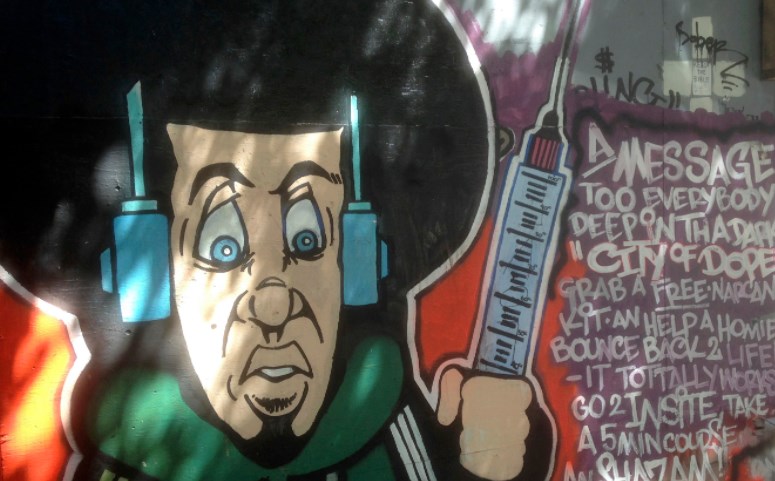Negative public reaction to giving addicts a free safe drug supply in the opioid pandemic was a key consideration for NDP government decision makers as they came to grips with the crisis.
And that’s left one addicts’ rights activist wondering why public opinion should be considered in response to a public health emergency that’s claimed thousands of lives.
The information comes from a 2018 briefing note for then NDP Minister of Mental Health and Addictions Judy Darcy obtained by Glacier Media under access to information legislation.
That note from provincial health officer Dr. Bonnie Henry’s office said Victoria expected to provide safe supply to save lives and promote better health.
However, the note said, implementing such a supply could also mean:
• potential negative reaction to providing those at high overdose risk with opioids with government-bought drugs while many receiving pain-relief opioids paid for their own medications;
• accepting people with ‘opioid use disorder’ should have access to opioids for non-medical purposes;
obtaining medical exemptions under the federal Controlled Drugs and Substances Act;
• further accelerating provision of oral and injectable opioid agonist therapy; and
• commitment to rigorous scientific evaluation.
Ann Livingston, a community organizer in Vancouver's Downtown Eastside and a founder of the Vancouver Area Network of Drug Users support group, was horrified public opinion should be a factor in the public health emergency declared by Henry’s predecessor Dr. Perry Kendall in 2016.
“That’s the last thing you think about in a public health emergency,” she said. “It’s a minority of British Columbians which would be pissy about that.”
Livingston said if a way could be found to charge fairly for drugs in B.C., “let’s do that instead of counting dead bodies.”
The note was prepared for then-Minister of Mental Health and Addictions Judy Darcy.
It said 1,452 people had died from suspected illicit drug overdoses in 2017 and a further 972 in the first eight months of 2018. Some 1,716 people died due to illicit drug use in 2020 and 165 died in January of 2021 alone, the highest monthly tally yet.
At the time of writing, the note said an estimated 115,000 live with ‘opioid use disorder’ in B.C., including 42,200 who injected their drugs. Government actions were intended to save lives, reduce stigma around drug use and build treatment and recovery services.
Indeed, the government said earlier this month, there has been a 395% increase (from 677 to 3,348 people) in the number of those dispensed hydromorphone in December 2020 compared with March 2020.
Research released in 2018 by Dr. Nick Bansback, researcher at the Centre for Health Evaluation and Outcome Sciences at Vancouver’s St. Paul’s Hospital and UBC School of Population and Public Health associate professor, said, “Funding injectable hydromorphone, a legally approved pain-management drug, reduces mortality, increases quality of life and saves overall costs, when compared to methadone alone.”
He said while direct costs of hydromorphone are higher than methadone, the research showed cost saving from retaining individuals in treatment for longer, and consequently reducing the hospitalizations and criminal activity that rise when people are not retained in any treatment.
But, said Livinston, drugs such as heroin and cocaine should be added to what’s known as the provincial formulary, the list of drugs covered by Pharmacare.
She said such a change would untie hands of doctors and pharmacists in handling prescriptions.
But, she said, Victoria won’t put drugs such as heroin or cocaine on the formulary.
The note said the government had established the Overdose Emergency Response Centre to, in part, meet community needs through safe drug supply. It noted the B.C Overdose Action Exchange and Vancouver Police Department recommended increasing safe supply access.
In early March, the ministry said $15 million in federal funds would go to three Vancouver and one Vancouver Island project to support safe supply.
“These projects will provide pharmaceutical-grade medication as an alternative to the toxic illicit drug supply for people who have not responded to other forms of treatment for opioid-use disorder,” the ministry said.
Supervised injection and safe inhalation sites were also declared essential services during the pandemic.
The document, part of which is redacted, was released after a protracted process through the ministry and the Office of the Information and Privacy Commissioner beginning in October 2019. Glacier sought emails between any or all of Overdose Emergency Response Centre director Miranda Compton, centre executive lead Dr. Patrica Daly and assistant deputy minister Taryn Walsh for Oct. 8 – Nov. 23, 2018.
One email was released.
@Jhainswo



